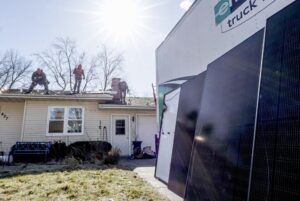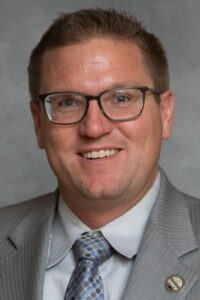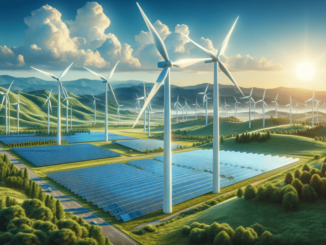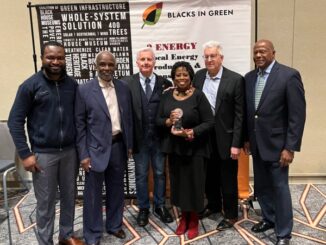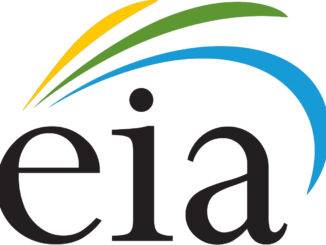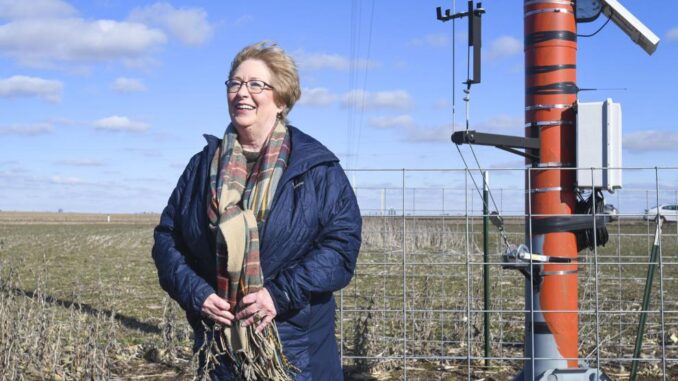
Karen Smith-Cox and her husband, Max, were looking to diversify the portfolio of their 360-acre Moultrie County farm — in his family since 1938 — in hopes of ensuring that her three stepdaughters would one day inherit it from their father and be able to keep it.
An opportunity presented itself with a knock on the door from a RWE Renewables representative. The company, which already owns and operates three wind farms in Central Illinois, was interested in placing wind turbines on their property.
Interest in new renewable projects in Illinois has been palpable since the Climate and Equitable Jobs Act was signed by Gov. J.B. Pritzker in September 2021. The law aims to get the state to 100% carbon-free energy generation by 2050 by, among other things, upping annual state subsidies for wind and solar projects by $350 million.
“I know there’s a lot of controversy over turbines right now,” Cox told Lee Enterprises. “But a lot of people don’t understand that this is our business and this is our livelihood. And that it’s gonna happen. The turbines are coming to Illinois because of (CEJA).”
Knowing this, Cox did her research, learning as much as she could about the technology. Attracted by annual land-lease payments for themselves and the hundreds of thousands of dollars that a project could potentially generate for local schools, the couple signed up with RWE.
But, before the project could get off the ground, they faced headwinds that ultimately culminated with the Moultrie County Board voting in May 2022 to ban the development of wind turbines outright.
The measure, at least for now, killed the project on Smith-Cox’s farm and at least one other project. It also prevented new projects from even being considered.
“It was hard to deal with because they were telling the landowners what they could or couldn’t do with their land,” Smith-Cox said.
What happened in Moultrie County is not unique — at least 15 counties, mostly scattered across Central Illinois, have enacted ordinances that have either effectively banned or significantly hindered the development of wind and solar projects.
This local resistance has had statewide impact, as advocates say it slowed the buildout of wind and solar generating capacity in wind-heavy areas.
So, last month, state lawmakers took action, passing House Bill 4412, which establishes statewide zoning standards for utility-scale wind and solar projects. Gov. J.B. Pritzker signed the legislation late last month.
Counties with ordinances not in compliance now have until the end of May to update their rules.
This has led to cheers from environmental advocates hoping to keep Illinois on track to meet its lofty climate goals as well as landowners looking to supplement their incomes with wind or solar installations.
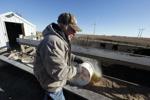
But it also sparked significant pushback from county officials, who lament the loss of local control on an issue that is literally in their backyards.
“I’m tired of the state and federal level telling us what we can and can’t do,” said Moultrie County Board chairman Billy Voyles. “So if they want to police it, we’ll close our courthouse and we’ll let them come down and police it. What’s the point of us being there?”
What the legislation does
The law creates a statewide setback requirement dictating how far turbines must be located from property lines. The standards are: 1.1 times the maximum blade tip height of the wind turbine to the nearest point on the property line of a non-participating property, or 2.1 times for a non-participating residence. This would equate to about one or two city blocks, respectively.
Residents in surrounding areas are not to experience more than 30 hours a year of what’s known as “shadow flicker,” the effect of the sun shining through the rotating blades of a wind turbine, which casts a moving shadow.
For solar panels, the setback is 50 feet from the nearest point on the property line of a non-participating property or 150 feet from the outside wall of the structure to the buildings on non-participating properties.
Solar facilities must also be surrounded by fencing of at least 6 feet but no more than 25 feet. No solar panel can be more than 20 feet above ground when arrays are at full-tilt.

Why advocates say standards needed
Indeed, the law’s advocates say “guardrails” became necessary because it was apparent that several counties across the state were enacting such restrictive zoning that it was stunting the growth of the renewable energy industry in the state.
“It’s because 15 counties that are in really good wind areas just said they were going to ban wind without any respect to the projects or what people wanted on their own property,” said Jen Walling, executive director of the Illinois Environmental Council. “That is entirely the reason. We’re going to need access to all of the good wind areas to build the amount of wind energy we’re going to need to build to meet CEJA.”
The counties identified by environmental groups as hostile to wind and solar are Boone, Champaign, Christian, DeKalb, DeWitt, Edgar, Ford, Grundy, Iroquois, Kankakee, Livingston, Mason, Menard, Moultrie and Sangamon.
The 2021 landmark climate law aims to wean Illinois off dirty power sources like coal and natural gas by 2045 and towards 100% renewable electric generation by 2050.
It mandates the closure of privately-owned coal-fired power plants by 2030 and natural gas plants by 2045 while providing ratepayer subsidies for the state’s nuclear fleet and additional resources for the buildout of renewables such as wind and solar.
With most of the state’s nuclear plants in the Commonwealth Edison service area that covers northern Illinois, downstate — in Ameren territory — has less of a built-in buffer in the transition to a carbon-free electric sector.
Coal plants that long provided reliable baseload energy and jobs for downstate communities have been shuttering for economic reasons even before their closures became state-mandated.
Long a net-importer of energy from other states that share the same power grid, Central and Southern Illinois are expected to face significant energy reliability and affordability issues the next few decades as more baseload energy sources go offline.

